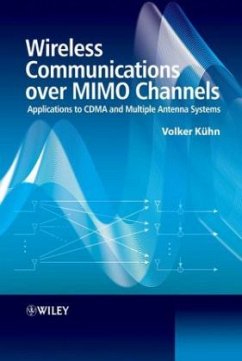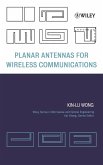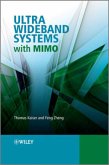Wireless Communications over MIMO Channels covers both CDMA and multiple antenna systems as well as state-of-the-art channel coding concepts, a combination rarely found in other books on the subject. A multitude of numerical and simulation results are provided, illuminating many different aspects of the discussed techniques. Two specific examples of MIMO systems studied are Code Division Multiple Access (CDMA) and multiple antenna systems.
An information theoretical analysis of these concepts illuminates ultimate limits and demonstrates their high potential. The use of multiple transmit antennas in order to improve the link reliability by diversity concepts (space-time coding) is described, along with Space Division Multiplexing (SDM) increasing the achievable data rate. A unified description using vector notations makes the similarity between CDMA and SDM systems obvious allowing the joint deployment of detection algorithms.
_ Besides a unified description using vector notations, detection algorithms are derived that make the similarity of both systems obvious.
_ Addresses the application of error control coding in mobile radio communications
_ The text and mathematical derivations are well supported by figures and numerical examples
_ For the example of a CDMA uplink, it is demonstrated that strong codes are an appropriate means to achieve high spectral efficiencies even in the presence of severe multi-user interference
_ Accompanying appendices include: basic derivations, tables of frequently used channel models, chain rules for entropy and information, data processing theorem, basics of linear algebra, Householder reflection and Givens rotation, and the LLL algorithm for lattice reduction
This book will be an essential resource for undergraduate and postgraduate students, scientists and engineers in the fields of advanced digital communications, digital signal processing, communication networks and information theory.
Hinweis: Dieser Artikel kann nur an eine deutsche Lieferadresse ausgeliefert werden.
An information theoretical analysis of these concepts illuminates ultimate limits and demonstrates their high potential. The use of multiple transmit antennas in order to improve the link reliability by diversity concepts (space-time coding) is described, along with Space Division Multiplexing (SDM) increasing the achievable data rate. A unified description using vector notations makes the similarity between CDMA and SDM systems obvious allowing the joint deployment of detection algorithms.
_ Besides a unified description using vector notations, detection algorithms are derived that make the similarity of both systems obvious.
_ Addresses the application of error control coding in mobile radio communications
_ The text and mathematical derivations are well supported by figures and numerical examples
_ For the example of a CDMA uplink, it is demonstrated that strong codes are an appropriate means to achieve high spectral efficiencies even in the presence of severe multi-user interference
_ Accompanying appendices include: basic derivations, tables of frequently used channel models, chain rules for entropy and information, data processing theorem, basics of linear algebra, Householder reflection and Givens rotation, and the LLL algorithm for lattice reduction
This book will be an essential resource for undergraduate and postgraduate students, scientists and engineers in the fields of advanced digital communications, digital signal processing, communication networks and information theory.
Hinweis: Dieser Artikel kann nur an eine deutsche Lieferadresse ausgeliefert werden.








